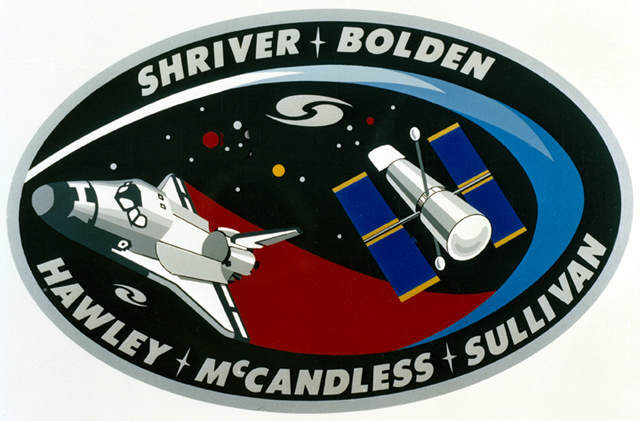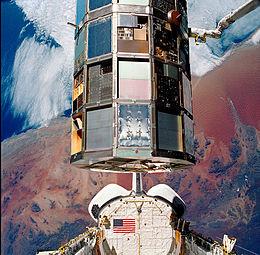Daniel C. Brandenstein
(Third Space Flight)
James D. Wetherbee
(Second Space Flight) Mission Specialist 1:
Bonnie J. Dunbar
(First Space Flight) Mission Specialist 2:
G. David Low
(First Space Flight) Mission Specialist 3:
Marsha S. Ivins
(First Space Flight)
STS-32 was the 33rd mission of NASA Space Shuttle programme, and the 9th launch of Space Shuttle Columbia. Launched on 9 January 1990, it marked the first use of Launch Pad A at Kennedy Space Centres Complex 39 since 1986; it also marked the first use of MobileLauncher Platform No. 3 (MLP-3) in the Space Shuttle programme. STS-32 was, at the time, the longest shuttle mission yet conducted, with a duration of nearly 11 days. Before STS-32, the only mission of the same duration had been STS-9 in 1983. On 20 January 1990, STS-32 executed the third night landing of the shuttle programme.
A free template by Lucknowwebs.com for WYSIWYG WebBuilder 8
Astronauts:
The Space Shuttle Missions
STS-32 (R)
Study
Research
Main Index
Space Cosmology
Science Research
*
About
Science Research
Science Theories
Desk
Site Map
BookShelf
Copyright © by Nigel G Wilcox · All Rights reserved · E-Mail: ngwilcox100@gmail.com
Designed by Nigel G Wilcox
Powered By AM3L1A
Pages within this section: USA Shuttle Mission Flights
STS-32
Pages within this section:
9
M
8
SM
Sub-Menu
menu
-
26
27
28
29
30
31
32
Command Pilot:
Pilot:

The primary objectives of the mission were to deploy the Syncom IV-F5 defense communications satellite (also known as Leasat 5), and to retrieve NASA's Long Duration Exposure Facility (LDEF), whose retrieval had been delayed for 41⁄2 years by scheduling changes and the Challenger disaster of 1986. Syncom IV-F5 was deployed on the second flight day, and a third-stage Minuteman solid perigee kick motor propelled it into a geosynchronous orbit. Dunbar retrieved the LDEF on the fourth day of the flight using the shuttle's Remote Manipulator System. The timeliness of the retrieval was of critical importance, because a high rate of solar flux had increased the density of the LDEF's orbital environment and accelerated its rate of orbital decay. Specialists who carefully monitored the stability of the craft's orbit had anticipated that if the LDEF was not retrieved in time, it would pass too low for the shuttle to safely reach, and could be destroyed during re-entry in February 1990. Thus, the mission's exact liftoff time was determined about 12 hours before launch, using the latest tracking data on LDEF. It was flown on a 352 kilometers (219 mi) orbit inclined 28.5 degrees to the equator.
The crew performed a 41⁄2-hour photographic survey of the free-flying structure, which held 57 science, technology and applications experiments. The 12-sided cylinder, about the size of a small bus, was then berthed in the orbiter's payload bay for return to Earth.
NASA had planned to acquire data on the crew members' exposure to long periods of zero gravity, and its effects on the crew's performance while landing the orbiter after an extended mission. STS-32R set a new shuttle duration record of nearly eleven days. An orbiter kit was developed to allow the shuttle to operate for up to 16 days in Earth orbit, and would later make its debut on Columbia's STS-50 mission in 1992.
The retrieval of LDEF was filmed with an IMAX camera, and appeared in the IMAX film Destiny in Space in 1994. Earth observation footage from the camera also appeared in the 1990 film Blue Planet.

The Syncom IV-F5 satellite
Data Courtesy Wikipedia.org
















